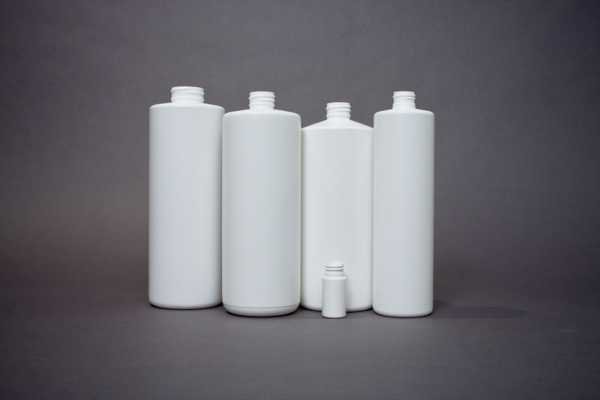At a Glance:
- Material Properties: HDPE offers high impact resistance and affordability, while PEEK provides exceptional mechanical strength and thermal stability.
- Applications: HDPE is ideal for general-purpose applications, while PEEK is used in high-performance, demanding environments.
- Cost-Effectiveness: HDPE is more economical, but PEEK’s superior properties justify its higher cost in critical applications.
When selecting the right material for your engineering or manufacturing project, understanding the differences between various plastics is crucial. High-Density Polyethylene (HDPE) and Polyether Ether Ketone (PEEK) are two widely used plastics. We will explore the key differences between HDPE and PEEK, focusing on their properties, applications, and cost-effectiveness to help you make an informed decision.
Material Properties: Strength and Durability
HDPE: A Versatile and Durable Option
High-Density Polyethylene (HDPE) is known for its excellent strength-to-density ratio, making it a robust and durable material. HDPE is highly resistant to impact, chemicals, and moisture, which allows it to perform well in a wide range of environments. Its flexibility and ability to withstand low temperatures without becoming brittle add to its appeal. Additionally, HDPE is lightweight, making it easy to handle and process in various manufacturing settings.
Typical HDPE applications include consumer goods, piping systems, and packaging materials. Its properties make it ideal for general-purpose uses where durability and affordability are key considerations.
PEEK: High-Performance Plastic for Demanding Applications
Polyether Ether Ketone (PEEK) is a high-performance thermoplastic known for its exceptional mechanical strength, thermal stability, and chemical resistance. Unlike HDPE, PEEK can withstand very high temperatures (up to 250°C) without losing its structural integrity. It also has a high tensile strength and is resistant to a wide range of chemicals.
PEEK’s superior properties make it suitable for applications in industries such as aerospace, automotive, and medical devices. It is often used in components that require high precision, such as gears, bearings, and pump components, where long-term reliability and performance are critical.
Applications: Where Each Material Excels
HDPE: Everyday Applications
HDPE is commonly used in applications where a balance of strength, durability, and cost is required. Its versatility allows it to be used in various products, including:
- Packaging: Crates, trays, bottles, and caps.
- Piping: Water and gas supply, sewage systems, and drainage.
- Consumer Goods: Toys, storage bins, and outdoor furniture.
HDPE’s affordability and ease of processing make it a go-to material for mass-produced items that need to be both durable and cost-effective.
PEEK: High-Stakes Environments
PEEK is often chosen for applications where extreme conditions are the norm. It is commonly used in:
- Aerospace: Aircraft components that require high strength-to-weight ratios and thermal stability.
- Medical Devices: Surgical instruments and implants due to their biocompatibility and resistance to sterilisation processes.
- Automotive: Engine components and transmission parts that operate under high stress and temperature.
PEEK’s ability to maintain its properties under extreme conditions makes it indispensable in industries where failure is not an option.

Cost-Effectiveness: Weighing the Options
HDPE: An Economical Choice
One of the most significant advantages of HDPE is its cost-effectiveness. HDPE is produced in large quantities; hence, it is an affordable option for a wide range of applications. Its low price point, combined with its durability and versatility, ensures that HDPE provides excellent value for money, particularly in high-volume manufacturing scenarios.
PEEK: Premium Performance at a Higher Cost
PEEK is a premium material that costs more than HDPE. The advanced properties of PEEK, such as its high thermal resistance and mechanical strength, justify its price in applications where performance is paramount. While PEEK may be more expensive upfront, its durability and reliability in critical applications can lead to cost savings over time by reducing the need for replacements and maintenance.
Conclusion: Choosing the Right Material
When deciding between HDPE and PEEK, the choice depends on the requirements of your application. HDPE offers an excellent balance of durability, versatility, and cost-effectiveness for a wide range of general-purpose applications. On the other hand, PEEK’s superior mechanical properties and thermal stability make it the material of choice for high-performance, demanding environments where reliability is critical.
By understanding the differences between these two materials, you can make an informed decision. Whether you need a cost-effective solution for everyday use or a high-performance material for specialised applications, HDPE and PEEK each offer unique benefits that can meet your needs.
If you’re unsure which material is best for your project, consider consulting with an expert who can provide guidance based on your specific requirements. Whether you’re in Shepparton, Goulburn, Murray Valley, or Southern NSW, choosing the right material is key to achieving optimal performance and cost-efficiency in your operations.

